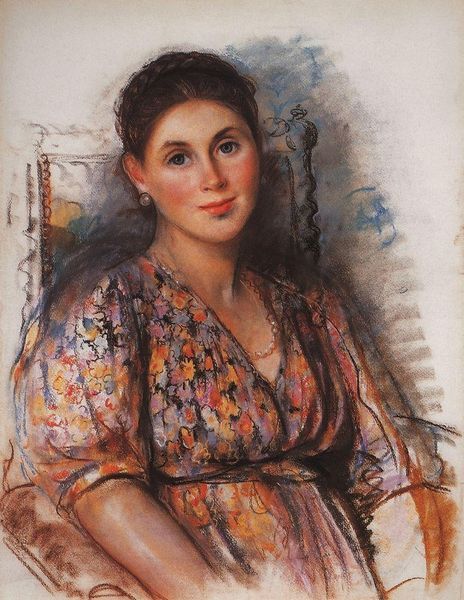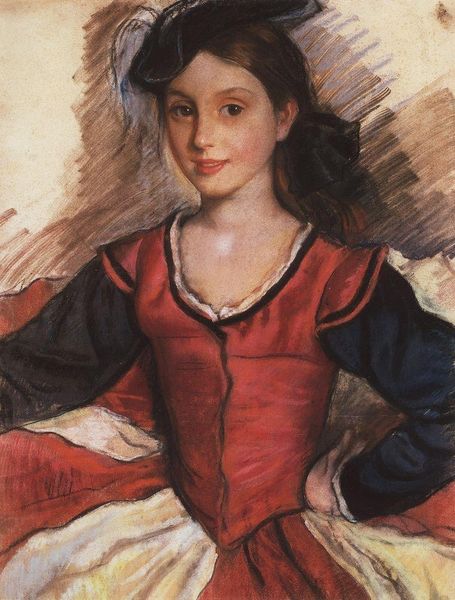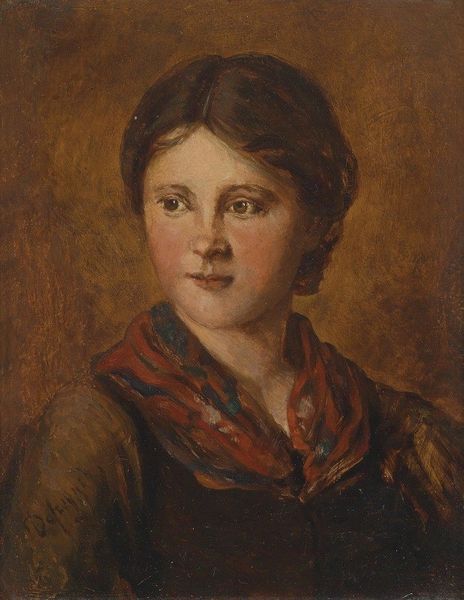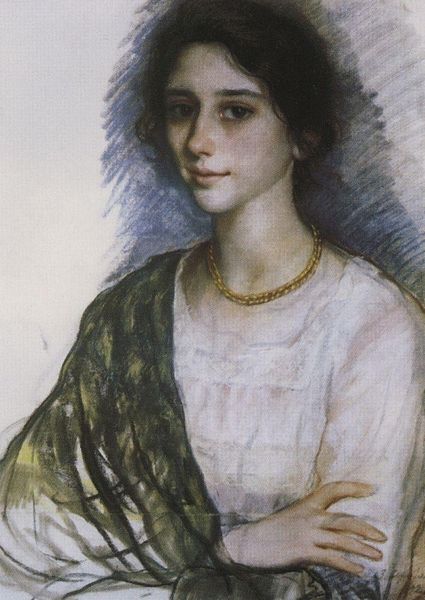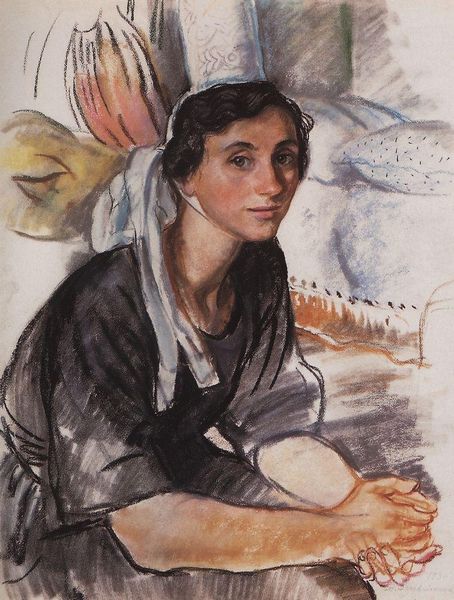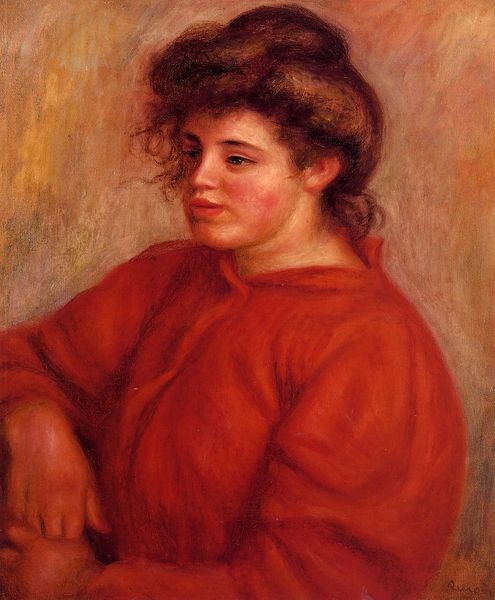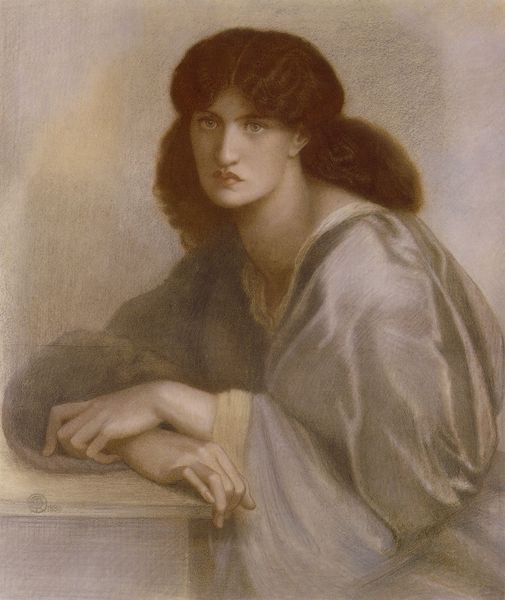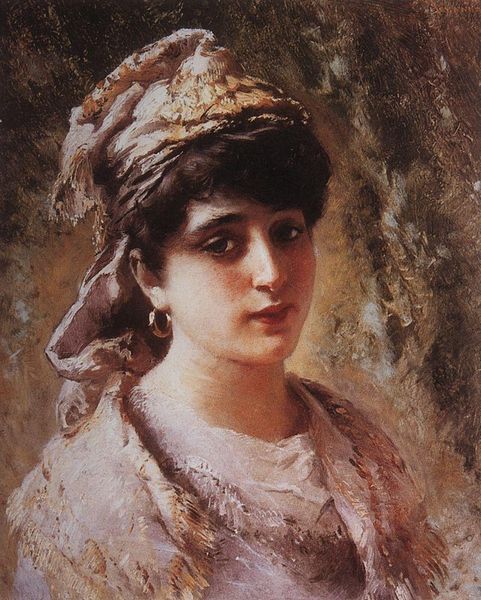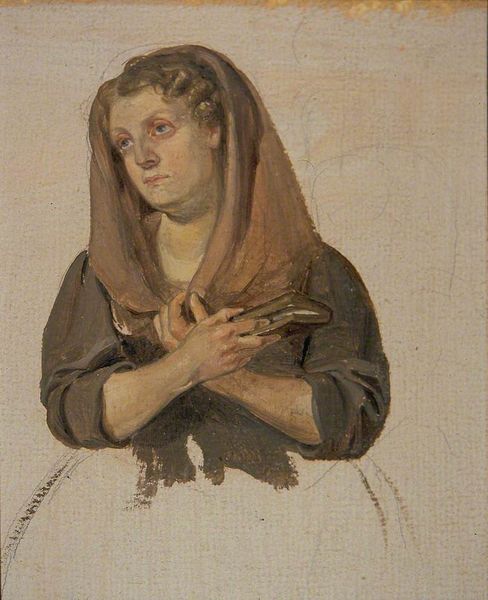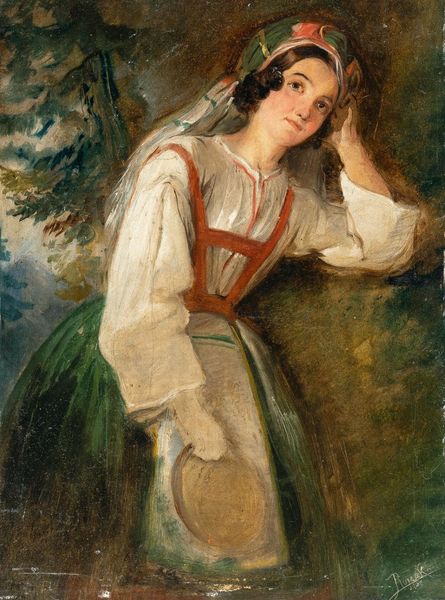
painting, oil-paint
#
portrait
#
painting
#
oil-paint
#
figuration
#
oil painting
#
realism
Copyright: Zinaida Serebriakova,Fair Use
Curator: It's such a privilege to share Zinaida Serebriakova’s "Portrait of Countess Rosario Zubova" from 1939. Look at how she captures Zubova's likeness with such understated elegance. Editor: My first impression is the overwhelming texture—the luxurious fur juxtaposed with the smooth fabric creates an almost palpable sensory experience. It's tactile, opulent. Curator: Absolutely, and consider the context of 1939. Serebriakova, painting an aristocrat in exile—it speaks volumes about identity, displacement, and perhaps a longing for a past order. How does the depiction of these luxurious materials play into that? Editor: Well, the fur and the rich color of the coat immediately point to wealth and status, but there's something about the application of oil paint, the visible brushstrokes, that disrupts the illusion. It reveals the constructed nature of the image and perhaps also of that aristocratic identity. The visible labor. Curator: I agree. There’s also a certain melancholy in Zubova's expression. Knowing that Serebriakova herself experienced exile, does this work reflect a shared experience of loss? Does Zubova become a symbol for a displaced class and the loss of homeland during a period of social upheaval? Editor: Possibly, but the material excess also brings up the question of consumption. The sheer amount of fur demands a critical look at the resources and labor required to produce it. It’s beautiful, undeniably, but beauty built on what? The oil paint itself as a material has a history too, connecting to specific global trades and social structures. Curator: So you're saying it’s not just a portrait of a woman, but also a material portrait of a specific moment in history—a visual manifestation of the social and economic forces at play? Editor: Precisely. Serebriakova offers a glimpse of Zubova as an individual but reminds us that identity is intrinsically linked to material circumstances, to the world of objects and their making. Curator: This encounter with Serebriakova's portrait underscores how even the most seemingly straightforward representation can open up a rich dialogue about history, identity, and the enduring power of artistic expression to capture complex realities. Editor: And reminds us to look beyond the surface sheen and consider the often-unseen material underpinnings of even the most beautiful images. To think about what is made, and how.
Comments
No comments
Be the first to comment and join the conversation on the ultimate creative platform.
